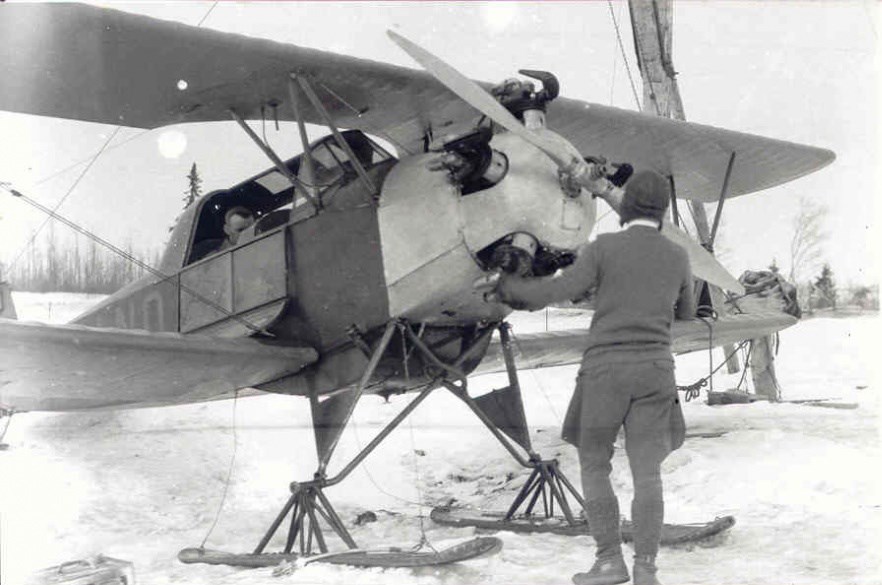It can be said the most famous bush pilots in the early days were in and out of Flin Flon.
Most of them were fighter pilots in World War I, pilots called “aces” because of the number of enemy planes they shot down in one on one combat (kills).
Flying the North, with its hardships and dangers, attracted them, and their flying skills and courage made them great at it.
Doc Oaks was a World War I fighter ace credited with 11 wartime kills and, like many who became noted bush pilots, he won the Distinguished Flying Cross. After the war he became a true pioneer in the use of bush planes.
Captain F.J. Stevenson was awarded the Distinguished Flying Cross for 18 kills, plus the French and the Belgian Croix de Guerre. All of his medals are on display at Winnipeg International Airport.
Back home in Canada, Steventon joined Western Canada Airways and made several epic trips. He delivered tons of supplies to remote locations like Churchill in the most primitive of conditions: no landing fields, lighting, or navigation or radio aids. Flying was often done in extreme cold in an open cockpit.
Jeff Batters Home-Hay had also won the Distinguished Flying Cross and was credited with seven kills. He became, by the time he retired in 1952, the oldest bush pilot in Canada.
There were two Roy Browns. Both were in Flin Flon at one time. Francis Roy Brown was a fighter pilot who saw duty in World War I before becoming a bush pilot.
The other Roy Brown, no relation, was the famous Roy Brown who shot down the Bloody Red Baron. However this Brown was never a bush pilot.
Wop May was also a World War I fighter pilot ace who won a Distinguished Flying Cross and an Order of the British Commonwealth. May had the distinction of being the last Allied pilot pursued by the Bloody Red Baron before the Baron was shot down. After the war, as a bush pilot, May was involved in several high profile incidents, the most famous being the search and take down of the Mad Trapper of Rat River, Albert Johnson.
May was the one who figured out how Johnson had been moving around in winter without getting caught – he walked where the caribou herds walked.
The story of the Albert Johnson manhunt became the basis for the 1981 movie Death Hunt starring Charles Bronson.
Con Farrell was another winner of the Distinguished Flying Cross and one of Canada’s first airmail pilots when he took on a route from Cranberry-Portage to Kississing Lake in 1920. He was a bush pilot from 1920 to 1939.
Jack Hone was a businessman in The Pas who moved to Flin Flon in 1925 to open a general store. He became impatient with how long it took to barge in supplies, so he took flying lessons and bought himself a plane: an Avro Avian Biplane, which he immediately flew up to Churchill without maps, radio or refuelling stations, just for the adventure.
He then founded Arrow Airways in 1930-31, which provided freight-passenger service to northern Manitoba and the Arctic from bases in Flin Flon, Sherridon and The Pas.
Jack Hammell was the most famous mining promoter in Canada. He was a key figure in the development of the Flin Flon ore deposit between 1915 and 1925, as well as in the development of several other mines in Canada, like Red Sucker Lake and Pickle Crow. In 1928 he created NAME (Northern Aerial Mineral Exploration). Hammell made deals with prospectors: in exchange for flying them into remote locations, they agreed to cut him in for a share of any profits. During its existence NAME brought together many of the most famous prospectors, like Tom Creighton, and many of the most famous bush pilots, like Wop May, often flying out of Channing.
For more stories about the daring pilots of the north, check out Bush Pilots: Daredevils of the Wilderness by Peter Boer.




